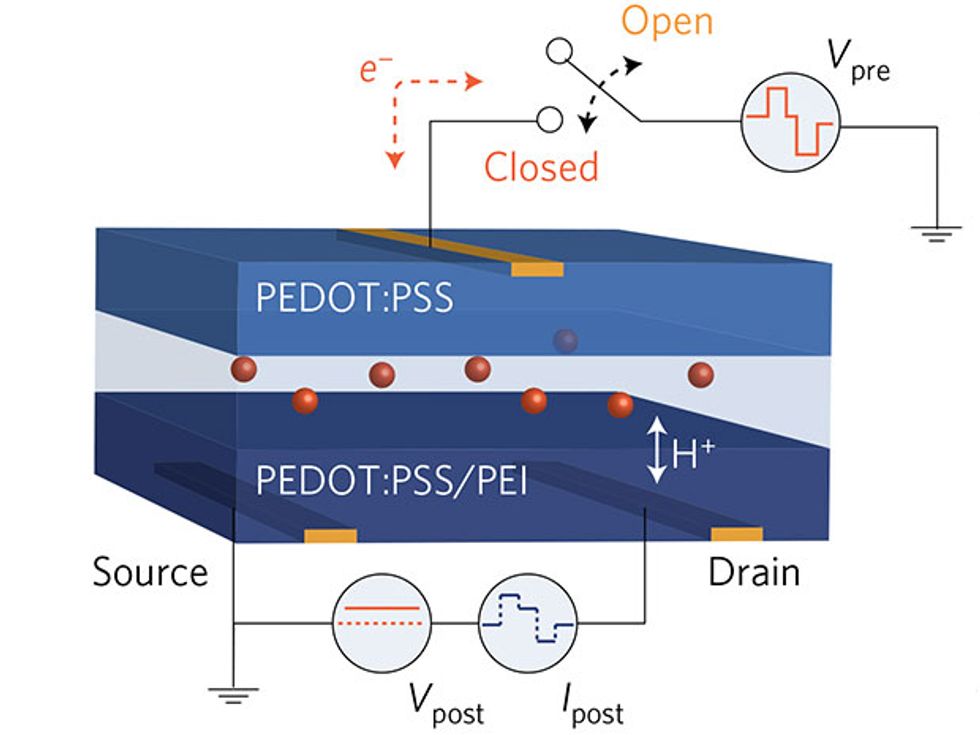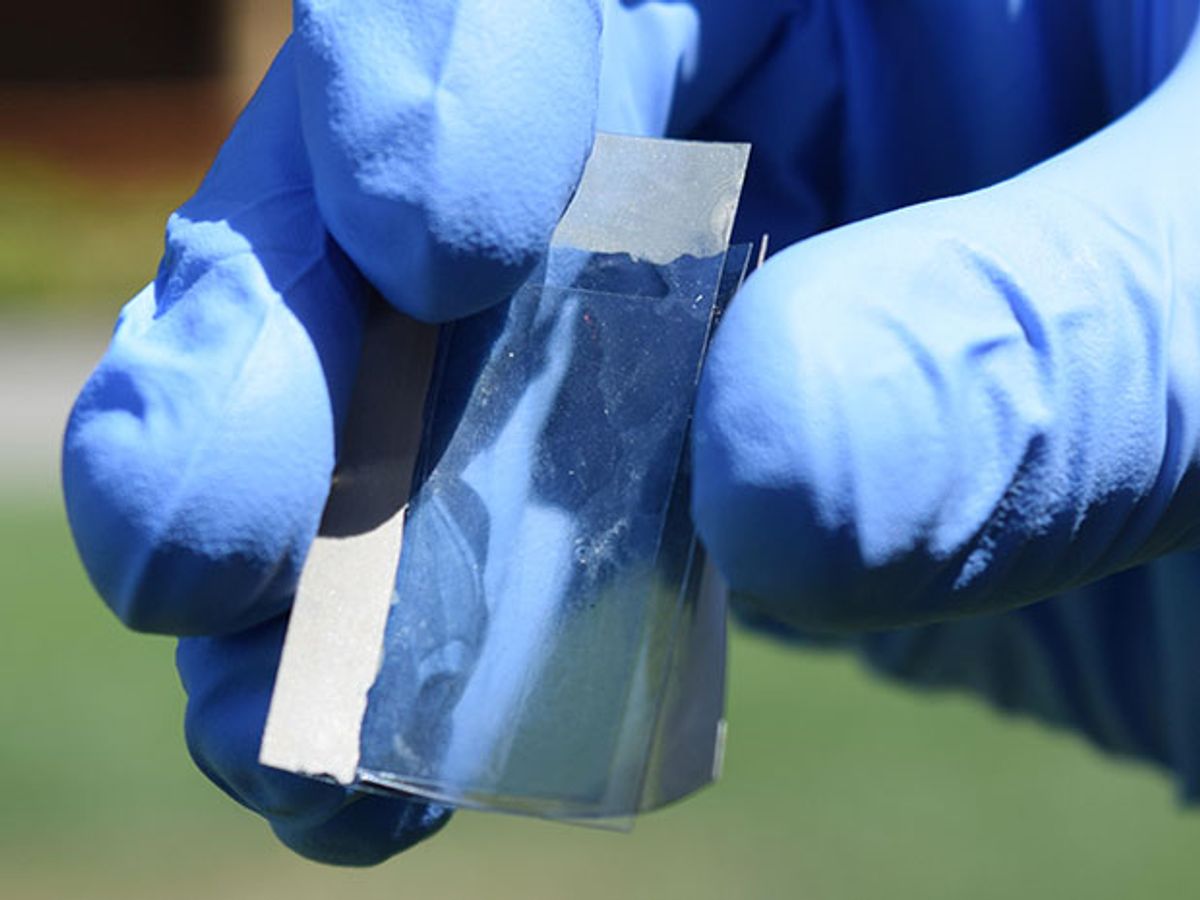A team based at Stanford University and at Sandia National Laboratories, in Livermore, Calif., have created a new form of “artificial synapse” that may one day be used to create flexible circuitry that could directly interface with the brain.
The new device, a form of organic transistor that the team calls an electrochemical neuromorphic organic device (ENODe), joins the ranks of technologies such as the memristor and phase-change memory: devices that may one day be used to create chips that can perform brain-like computations using far less power than even the most state-of-the-art silicon systems consume.

In some ways, ENODe resembles a battery more than it does a transistor. Two thin polymer films are separated by an electrolyte that allows protons to pass through but not electrons. But like transistors, the device has three terminals. Current flows between two of them through the “postsynaptic” film. The third terminal is attached to the other (“presynaptic”) film. A voltage pulse at the presynaptic terminal causes charges to flow through the electrolyte either in or out of the postsynaptic film. This results in a change in the oxidation level which determines how much the film resists the flow of current through it. The details were published this week in Nature Materials.
According to co-author Alec Talin of Sandia, the new device circumvents a limitation that other (two-terminal) artificial synapses suffer from: the fairly high level of energy needed to switch from one state to another. Typically, if the energy barrier to switch is too low in those devices, thermal fluctuations are enough to overcome it, meaning the device can switch states at random. “There’s no way to get around it,” Talin says, “because if you lower that voltage, it would simply switch back.”
The ENODe doesn’t have this problem, the authors write, because the barrier that maintains the state of the device is unrelated to the one that governs switching. As a result, the device can be designed to need little voltage to switch, and yet it will retain the resulting state for a long time. “Just like battery, once you charge it stays charged,” says Talin, who co-led the research with Alberto Salleo at Stanford.
The new device can exhibit more than 500 different states of conductivity within about a 1 V range, using a switching voltage of roughly 0.5 millivolts between adjacent states. That might sound exceedingly low for those familiar with modern silicon transistors and so are accustomed to thinking in volts. But the device still uses about 10,000 times as much energy as a biological synapse would, a Stanford press release reports. Miniaturization is expected to help with that.
The device has several electronic properties that make it especially attractive for brain-mimicking neuromorphic computing chips, Talin says. And he notes that the same material used to make these devices has already been used to interface with live brain cells. “That opens up a possibility of interfacing live biological cells [with circuits] that can do computing via artificial synapses,” Talin says. “We think that could have huge implications in the future for creating much better brain-machine interfaces.”
To demonstrate how these devices would work, the researchers built a simple circuit that demonstrated Pavlovian learning—learning to associate one signal with another, like the sight of food with the ringing of a bell. The team also simulated how the devices would perform when combined to create a neural network, testing their ability to recognize handwriting.
Among the researchers’ next steps, Talin says, will be to build an array of these devices, to demonstrate their capabilities as a real-world neural network. They also plan to work on improving the speed of the device, which in this first demonstration took around 10 milliseconds to switch.
Rachel Courtland, an unabashed astronomy aficionado, is a former senior associate editor at Spectrum. She now works in the editorial department at Nature. At Spectrum, she wrote about a variety of engineering efforts, including the quest for energy-producing fusion at the National Ignition Facility and the hunt for dark matter using an ultraquiet radio receiver. In 2014, she received a Neal Award for her feature on shrinking transistors and how the semiconductor industry talks about the challenge.



